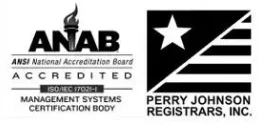World War II Aircraft
During World War II, warfare changed drastically from combat tactics used in previous wars. Aviation became a key part of modern warfare, and as countries at war vied for dominance, they were forced to work quickly and diligently to improve their aircraft fleets. Speed and power improved significantly between the beginning and end of World War II.
Types of Aircraft Used
The three main kinds of aircraft used during World War II were bombers, fighters, and transport planes. The bombers carried bombs to drop on targets. Bombers of light, medium, and heavy capabilities were used, depending on the type of target. Fighter planes were used for air combat, so these were the fastest and easiest to maneuver. Fighter planes were often used in conjunction with bombers to shoot down enemy bomber planes. Transport planes carried supplies and troops during the war.
- The Basics: Four Trainers: Pilots often trained on the Stearman biplane or the Piper J-3 Cub.
- Lockheed L-133 Starjet Single-Seat, Jet-Powered Fighter: In 1942, the United States used the Lockheed Starjet, which topped out at speeds of 612 miles per hour.
- Great Aircraft of History: The United States used transport planes, bombers, fighters, and more during World War II. Biplanes were used mainly in the beginning of the war.
- Top 10 Fighter Planes of World War II: The top-ten list of fighter planes from World War II includes the Lockheed P-38J Lightning, the North American P-51D Mustang, and the Republic P-47D Thunderbolt.
- Aircraft Between 1939 and 1945: The Royal Air Force flew aircraft such as the Short Stirling, the Vickers Warwick, and the Douglas Havoc.
- World War II Planes: The Allies used planes such as the Hurricane and the Spitfire to fight against the German Messerschmitts.
Advances in Aviation
Germany and Japan took combat to the skies immediately during World War II, launching aggressive air strikes. Technological advances in aviation during the war included improvements to long-range bombers, experimentation with jet-powered aircraft, and the use of radar to find enemy targets and detect enemy planes. Planes became faster, and fuel consumption also improved during the war. Technological innovations occurred both through national efforts and as a result of Allied collaboration.
- World War II Aircraft Facts: In 1944, the Army Air Forces aircraft numbers topped out at almost 80,000 planes.
- World War II Aircraft: Engineering and Technology History: Technology advanced significantly during World War II. Planes were more aerodynamic and made of aluminum. Piston engines provided more power, and new jet-powered airplanes entered the skies.
- The Aircraft Engines of World War II: The specifications for fighter and bomber airplanes during World War II included a minimum of 2,000 horsepower, which was achieved by fuel improvements and superchargers.
- World War II Technology That Changed Warfare: Radar and Bombsights (PDF): Radar and bombsights are two of the most notable technological advances that occurred during World War II, making a pivotal difference in both offensive and defensive war strategies.
- The Cutting Edge (PDF): At the beginning of World War II, the United States was behind Germany and Japan in technological flight advances.
- The Evolution of Military Aviation: The United States, England, and Germany were developing jet engines during World War II. Germany used a fighter plane with a jet engine, but this plane used a lot of fuel and had limited targeting abilities.
- The Rise of Air Transportation: At the onset of World War II, air travel was in its infancy. The Douglas DC-3 could fly across the United States with three stops for refueling.
- The Army Air Forces in World War II: A lag between conception and tactical use of aircraft made it difficult for the Army Air Forces to use more modern combat planes during World War II. However, by the end of the war, pilots were flying much more complex and powerful planes.
- Wood to Metal: The Structural Origins of the Modern Airplane (PDF): A switch to metal construction of airplanes occurred during the 1930s leading up to World War II, which improved speed and aerodynamics.
- Military Aircraft: New radar technology helped British fighter pilots find German targets during the Battle of Britain.
- Military Aviation: Key Innovations: It was the Royal Air Force of Britain that first used radar to detect incoming enemy aircraft at the beginning of World War II.
- The Science and Technology of World War II: Germany worked to advance rocketry during World War II, while the British worked to develop computers that would break German military codes.
Famous Pilots
Famous military pilots are called "flying aces." Some aces became famous for their skills, how long they flew, and their number of kills. Erich Hartmann is generally recognized as the top flying ace of all time based on his performance during World War II. Richard Bong is widely considered to be the top United States flying ace.


